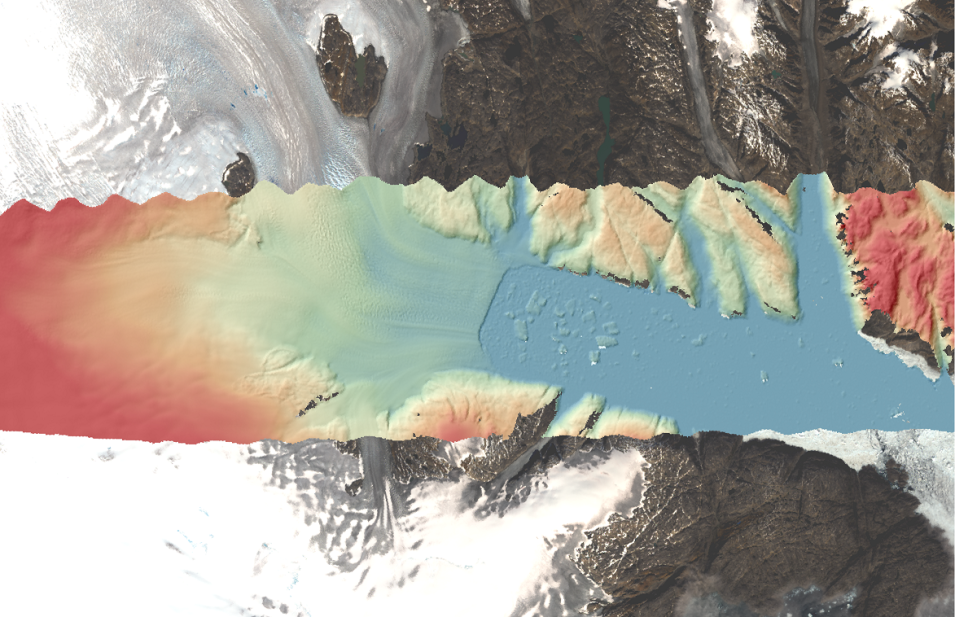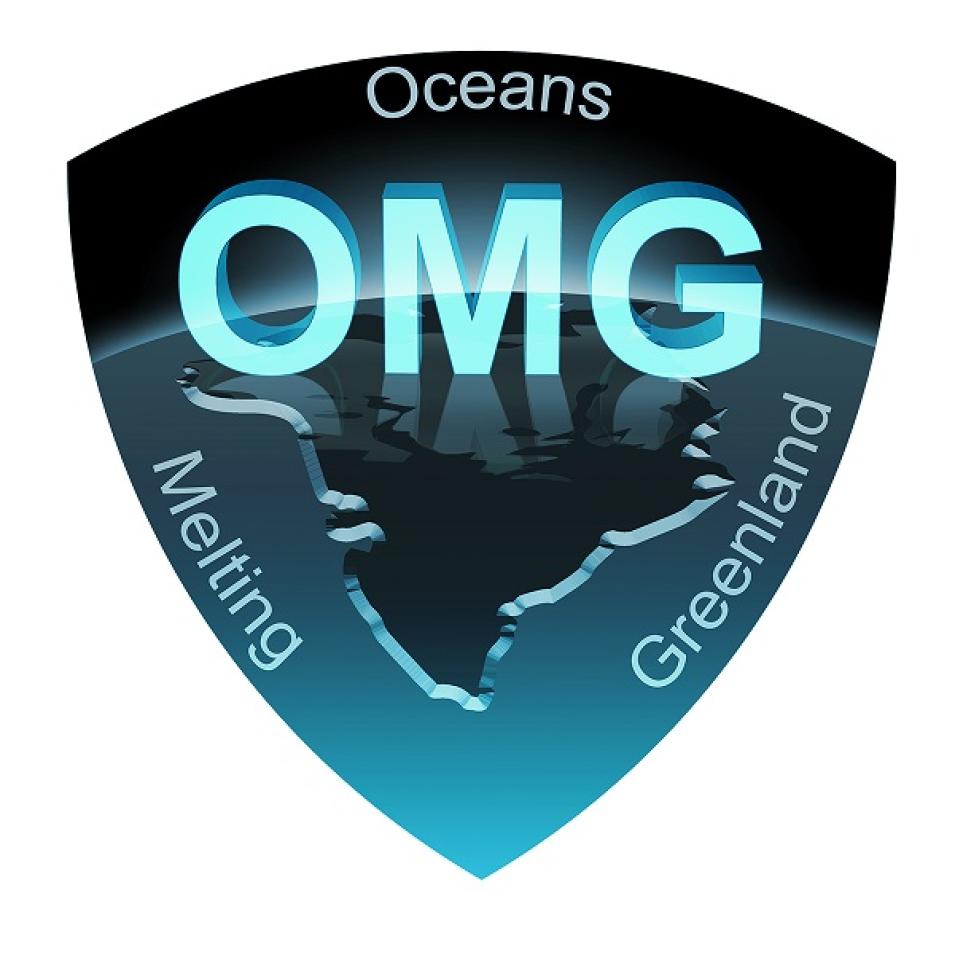A new dataset with gridded digital elevation models (DEMs) of Greenland Ice Sheet outlet glaciers is available through NASA’s Physical Oceanography Distributed Active Archive Center (PO.DAAC). The dataset, OMG Glacial Elevations from GLISTIN-A Ver. 1 (DOI: 10.5067/OMGEV-GLNA1), is part of the Oceans Melting Greenland (OMG) mission and is created from data collected by the Glacier and Land Ice Surface Topography Interferometer-Airborne (GLISTIN-A) radar.
GLISTIN-A campaigns were performed in 2016, 2017, 2018, and 2019 using a NASA Gulfstream III jet aircraft to generate high-resolution, high-precision elevation measurements of Greenland’s coastal glaciers. GLISTIN-A is an airborne single-pass interferometric Ka-band radar that provides digital elevation maps of the glaciers and surrounding areas near the glacier’s termination points. This new dataset facilitates analysis of year-to-year glacier surface elevation changes, and the dataset’s 50-meter horizontal resolution DEMs can be used to quantify ice volume change near glacier termini. These data, along with observations of airborne marine gravity and ship-based observations of sea floor geometry, are part of a revolutionary dataset for modeling ocean/ice interactions for improved estimates of global sea level rise.

